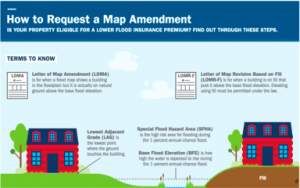Federal Flood Risk Management Standard Implementation: Reminder: Register for Upcoming Listening Sessions; Comment Period Extended
Please join FEMA and federal partners for Listening Sessions on the Federal Flood Risk Management Standard Implementation. These sessions continue to provide the opportunity to listen, ask questions, and provide feedback on how federal agencies implement the Standard.
FEMA, on behalf of the Mitigation Framework Leadership Group (MitFLG), published a draft version of Implementing Guidelines that remains open for comment. Recently the comment period was extended until May 6, 2015. The MitFLG, a collection of federal agencies with programs and authorities designed to mitigate the impacts of disasters on communities, is accepting written comments through the Federal Register process from those unable to attend the public meetings and will also host a virtual listening session. A revised Federal Register Notice will be published in the near future highlighting the comment extension.
Listening Sessions
• March 24, 2015
9:00 a.m. -12:00 p.m. (ET)
George Mason University
Johnson Center (Blg #30)
4400 University Drive
Fairfax, VA 22030
• Webinar:
March 25, 2015
3:00 p.m. – 6:00 p.m. (ET)
Register for the Webinar
• March 27, 2015
2:00 p.m. – 5:00 p.m.
Jerome Greene Hall
Columbia Law School – Room 104
435 West 116th Street (corner of Amsterdam Avenue)
New York, New York 10027
Due to space constraints of the facilities, seating may be limited. To reserve a seat in advance, please provide a request via email in advance of the session with the contact information of the participant (including name, mailing address, and e-mail address), and the meeting to be attended to FEMA-FFRMS@fema.dhs.gov and include the subject/attention line: Reservation Request for FFRMS. For anyone attending the meetings who is hearing or visually impaired, or who requires special assistance or accommodations, please also contact FEMA-FFRMS@fema.dhs.gov.
Background:
On January 30, the President issued an Executive Order, “Establishing a Federal Flood Risk Management Standard and a Process for Further Soliciting and Considering Stakeholder Input.” Future federal investments in, and affecting floodplains, will be required to meet the level of resilience established in the Federal Flood Risk Management Standard. This includes projects where federal funds are used to build new structures and facilities, or to rebuild those that have been damaged. These projects make sure that buildings are constructed to withstand the impacts of flooding, improve the resilience of communities, and protect federal investments.
The Standard requires agencies to consider the best available, actionable science of both current and future risk when taxpayer dollars are used to build or rebuild in floodplains. On average, more people die annually from flooding than any other natural hazard. Further, the costs borne by the federal government are more than any other hazard. Water-related disasters account for approximately 85% of all disaster declarations.
The MitFLG will revise the draft Implementing Guidelines, based on input received through the Listening Sessions and comments, and provide recommendations to the Water Resources Council.
The Water Resources Council will, after considering the recommendations of the MitFLG, issue amended guidelines to federal agencies on the implementation of the Standard. Agencies will not issue or amend existing regulations or program procedures until the Water Resources Council issues amended guidelines that are informed by stakeholder input.
FEMA and the MitFLG look forward to your participation and input in the process as part of the work towards reducing flood risk, increasing resilience, cutting future economic losses, and potentially saving lives.


